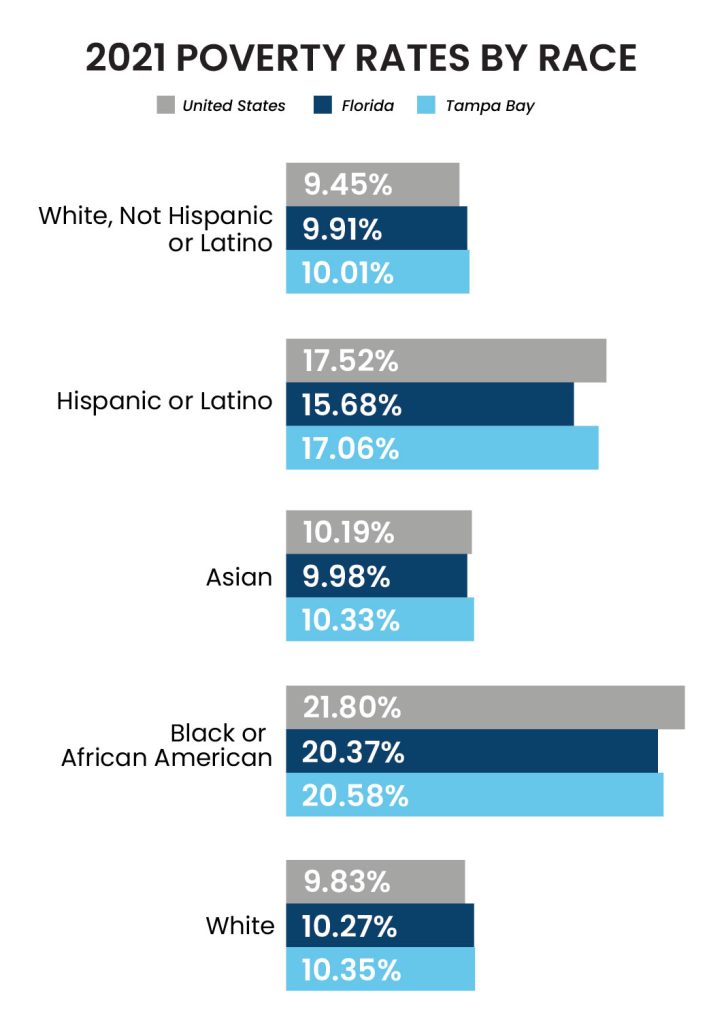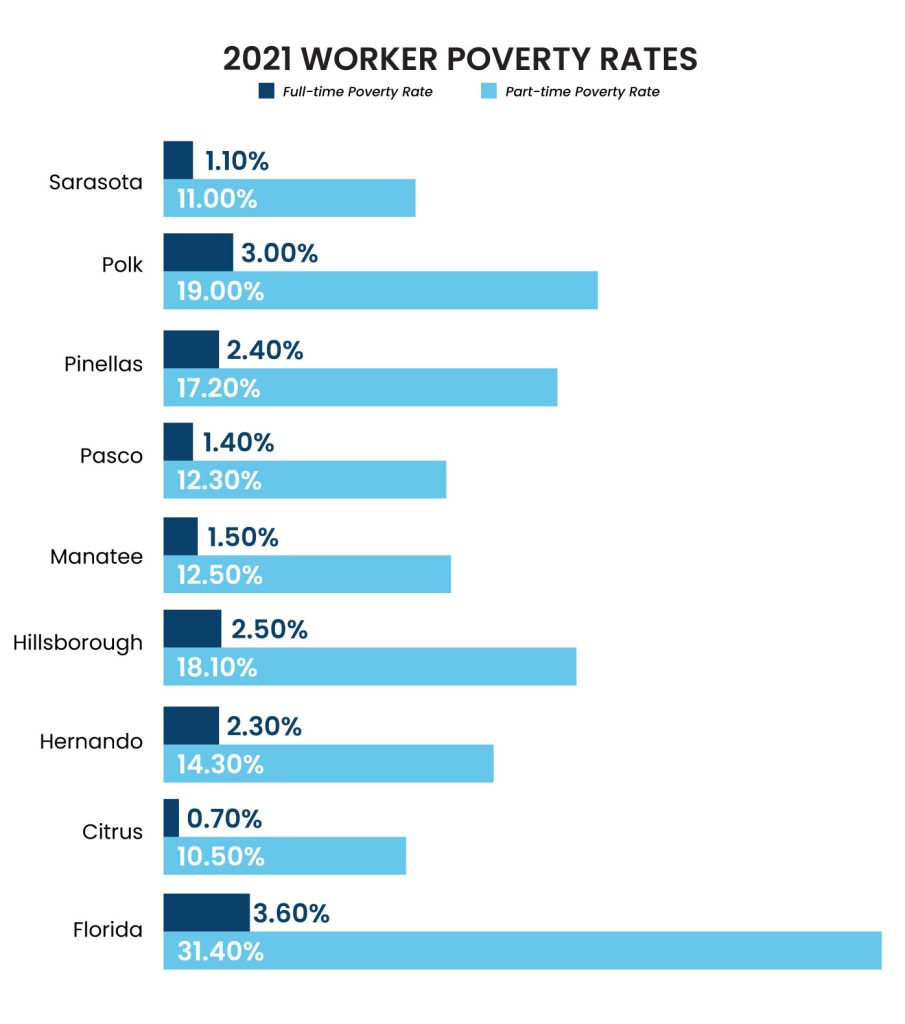HIGHLIGHTS
- A growing number of working adults are finding that their wages do not keep them out of poverty despite having a job.
- Educational attainment plays a significant factor. The quality of part-time jobs can vary tremendously based on a worker’s education level.
- Federal Poverty Levels do not capture cost of living increases at the local level. For example, consumer prices in Tampa-St. Petersburg-Clearwater metro area grew at 7.3% compared to the U.S. average of 4.0% for the year ending May 2023.
In 2023, the Federal Poverty Level (FPL) was $30,000 for a family of four. This measure is not adjusted to reflect cost of living differences across the U.S. and therefore, does not capture the current cost of basic household necessities. Given the Tampa Bay region’s rising cost of living relative to the nation as a whole, the number of households in financial hardship continues to be undercounted in o icial measures. While, federal emergency pandemic measures and economic policies provided critical support for economically challenged families during the COVID-19 pandemic, these measures only provided temporary assistance.


